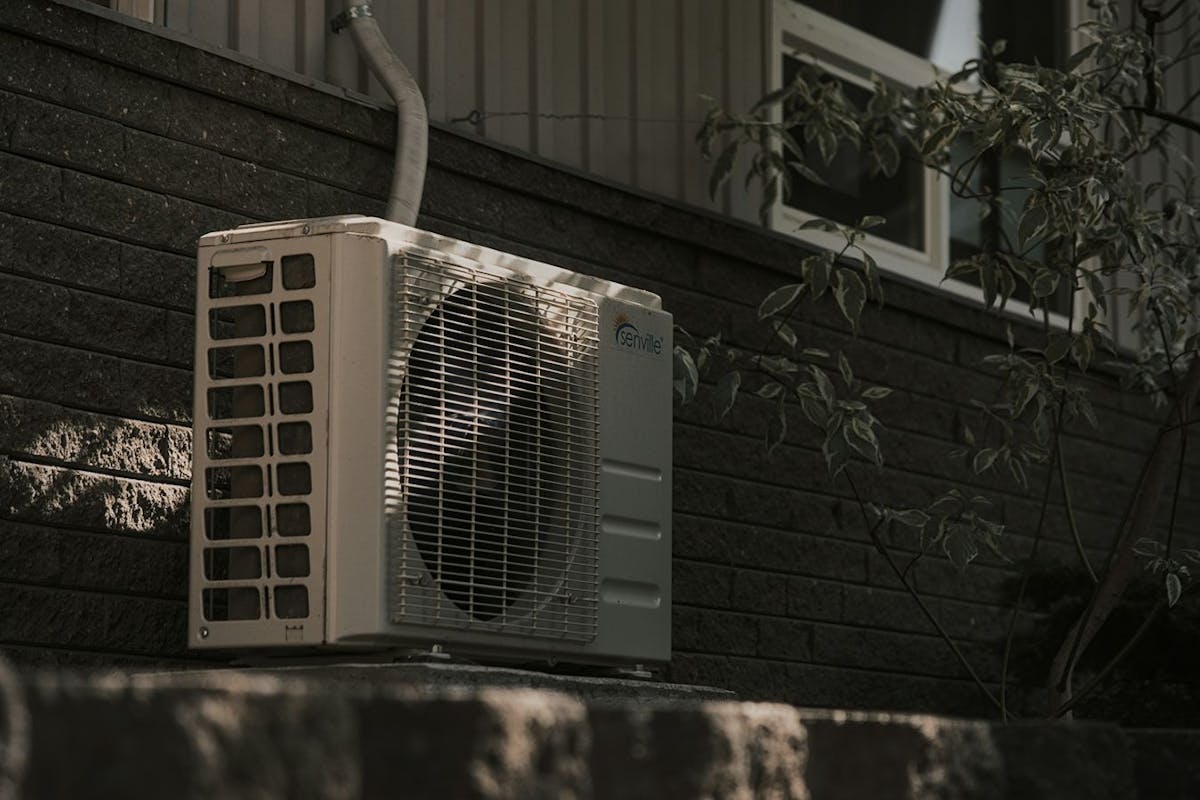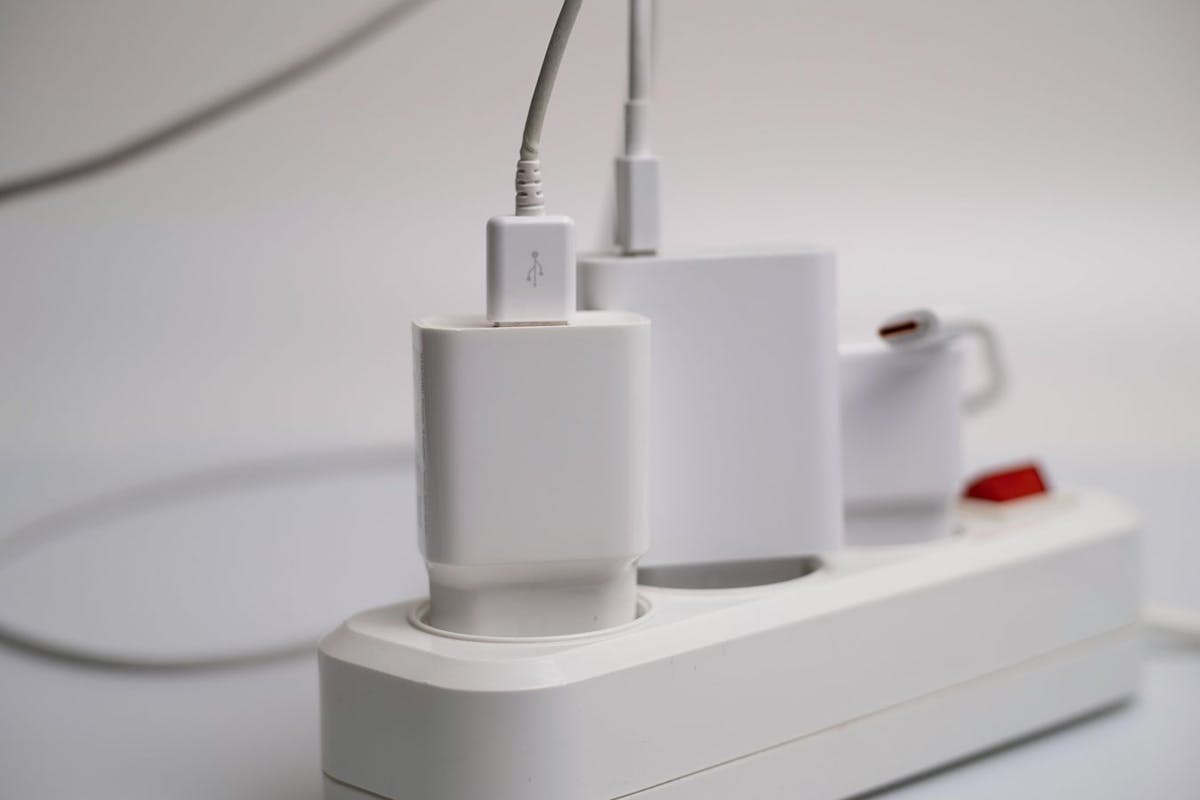Fall Maintenance and Energy-Efficiency Checklist for Your Home
Last edited

Author
Andrew Giermak
Solar and Electrification Writer and Editor

Editor
Ryan Barnett
SVP, Policy & New Market Development

Fall is the perfect time for football, corn mazes, leaf peeping, and a lot of other outside activities. Along with the neat fall fun, making a little time to do some maintenance and implement energy-saving tips before autumn turns to winter can save money and catch small issues before they turn into larger, more expensive problems.
Here are some maintenance and energy-efficiency tasks to check off the list in the fall so you can have an easier and more efficient winter.
See how much you can save with home energy changes
Change Your Thermostats Settings
As the temperatures start to dip, set a schedule for your heating or cooling for the new season. This will cut your energy bill and help extend the life of your HVAC system.
According to the US Department of Energy, you can save up to 10% a year on your heating and cooling costs by turning your thermostat back 7-10°F from its normal setting for eight hours a day.
During winter months, the recommended thermostat settings for heating season are as follows:
- Gas furnace: Set your thermostat to 68°F when you are home and awake, and lower it to 58-61°F when you are asleep or away.
- Heat pump: Set your thermostat to "Auto" mode and keep the temperature at 68°F when you are home and awake. This will allow the system to switch between heating and cooling modes automatically as needed.
Change Your Ceiling Fan Direction
Did you know the direction your ceiling fan turns can make a difference in how comfortable your home feels? In the summer, ceiling fans should rotate counterclockwise to create a cooling breeze.
As fall arrives and temperatures start to cool down, you should switch the direction of your ceiling fan blades to rotate clockwise. This will push warm air near the ceiling back into the room, making it feel more comfortable and requiring less heat from your furnace or heat pump.
Ceiling fans don’t actually change the temperature inside, they simply make it feel cooler or warmer by up to four degrees.
Switching directions for pull chain ceiling fans is usually pretty simple — just look for a small switch near the base of the fan and flip it to the opposite direction. Meanwhile, many newer models of ceiling fans have a switch right on the remote control that allows you to change the direction of rotation.
Change Your Furnace or Heat Pump Filters
One of the most important and often overlooked fall home maintenance tasks is replacing the air filters to your air conditioning, heat pump, or furnace.
Dirty filters not only make your HVAC system work harder (and use more energy) but can also lead to poor indoor air quality.
To help improve the quality of your indoor air and keep your HVAC system running smoothly, we recommend you replace your filters at least once every three months — or more often if you have pets or someone in your household who suffers from allergies or asthma.
You can also try a different type of filter. There are three popular filter rating systems that rate the filtration capacity of each filter: Minimum Efficiency Rating Value (MERV), Microparticle Performance Rating (MPR), and Filter Performance Rating (FPR). Typically, the higher the number, the more material and the smaller the particle that filter can capture.
Most systems and homeowners use a low MERV (rating 1-4) filter as sort of the standard, default filter. Using filters with a higher MERV rating significantly improves indoor air quality.
When changing your filters, check your owner's manual to see if there are any special instructions for your particular model of furnace or air conditioner.
Use Your Windows Wisely
Your windows can help make your home a little warmer or a little cooler, and more energy efficient, if you take a few simple steps.
If you’re feeling drafts from your windows, you can cover them tightly, including the frame, with plastic film on the inside. Tight-fitting shades or drapes may help with draftiness as well.
Inspect your doors and windows for drafts. If you find any, it’s an easy job to install new caulking or weatherstripping to plug them up. If you have south-facing windows (assuming the Northern Hemisphere here), and you want to help your home heating out, you can open the curtains during the day and bring in the sunlight. You will get natural heat from the sunlight, even if the temps are cool to cold. Then, make sure to close the curtains at night to reduce the chill coming off the window surface into the rest of your home.
When you’re trying to keep everything cooler, you can use curtains, blinds, and even plant shrubs and trees outside of windows, to increase shade inside.

Get Your HVAC System Serviced
Even if your HVAC is running ok at the moment, pros recommend having your HVAC checked and serviced twice a year: spring and fall. If you have a service contract with a company already, this is an easy step to take anyway.
Do it in the fall, when temperatures are comfortable, because you want to do all you can to avoid a terrible surprise in the middle of a blizzard in January.
Check Your Insulation
Checking the insulation up in your attic or down in your basement or crawl space is a good idea in the fall. When it gets colder, home insulation will keep heat inside. There’s really no bad time to check, or get a pro to check, your insulation. Ahead of the spring and summer, insulation is important because it will be keeping cool air inside more efficiently.
There are some DIY steps and checks that are fairly simple. You can also go straight to hiring a pro to give an expert measurement and assessment of what you have and need.
Change the Battery in Your Smoke & Carbon Monoxide Detectors
Fall is a great time to test smoke and carbon monoxide detectors and replace their batteries.
According to the National Fire Protection Association, about 59% of home fire deaths happen in homes with no smoke detector or one that didn’t work. So, ensuring your detectors are in good working order and have fresh batteries can help save lives.
The NFPA recommends replacing the batteries in your smoke detectors at least once a year, and replacing the entire sensor every ten years. Carbon monoxide detectors should be replaced every five years.
Learning how to change a smoke alarm battery is easy. Most detectors have a small panel you can remove with a screwdriver to get to the battery compartment. Once you have replaced the batteries, test the alarm to ensure it is working properly.
Smoke and carbon monoxide detectors are valuable safety measures in any house, but are especially important in homes that use wood, gas, propane, or oil for heat.
See how much you can save with home energy changes
Change Old Door and Window Seals
Cold weather can take a toll on your windows and doors, so it is important to inspect them each year to look for any damage that needs to be repaired, and make sure they are in good shape. One of the most common problems is broken or missing seals. Over time, the seals around your doors and windows can become dried out, cracked, or loose, letting in drafts and making your home less energy-efficient.
If you can see daylight around your doors or windows, or if you feel a draft when they are closed, it is time to replace the seals. You can usually do it yourself with a few tools and some caulk or weatherstripping.
First, use a putty knife or screwdriver to remove the old caulk or weatherstripping. Then, clean the area and apply new sealant. Be sure to follow the instructions on the package for the best results.
Tips for Better Energy Efficiency Year Round
Energy-efficient homes cost less to operate and are more comfortable to live in. Here are a few easy tips you can use to make your home more energy efficient this fall, and be ready for winter weather.
Install efficient appliances and fixtures
Electricity bills can be expensive, especially during fall and winter when we use more energy to heat our homes. One of the best ways to reduce energy costs is by installing efficient appliances and fixtures.
ENERGY STAR® certified appliances are up to 40% more efficient than traditional models, so they can help you save money on your utility bills. You can also look for ENERGY STAR-certified light bulbs, which use up to 75% less energy than traditional incandescent bulbs and last up to 10 times longer.
Educate your family about energy efficiency
One of the best ways to make your home more energy efficient is to educate your family about how to save energy. Simple things like turning off lights when you leave a room and wearing layers of clothing instead of turning up the heat can make a big difference.
Integrate smart technology into your home
Nowadays, there are all sorts of smart devices that can help you save energy and money, and prevent damage to your home. Smart thermostats, for example, can learn your heating and cooling preferences and automatically adjust the temperature to save energy when you're not home.
Get your home inspected by a professional
If you want to make sure your home is as energy efficient as possible, it is a good idea to get it inspected by a professional. A home energy audit checks how your home loses heat, or cold, mainly due to bad seals, cracks or wear in the home structure itself, or poor or lack of insulation, among other things.
If you get this information in the fall, you can use it and make improvements ahead of winter.
Harness solar power
Solar power is a renewable energy source that can help you save money. With plenty of south-facing windows, your home can harness the power of the sun to provide heat in the winter and natural light all year long. You can also install solar panels on your roof to generate electricity, reduce your carbon footprint, and save money on your monthly electricity bills.
If you are thinking about installing solar panels or exploring other energy upgrades at home, check out Palmetto’s Savings Maximizer today.
See what home electrification can do for you:
Frequently Asked Questions
How can I save energy in the fall?
Assess how you are using your thermostats and perhaps upgrade to a smart thermostat. Other ways to save energy include reversing your ceiling fans for the cooler time of year, replacing air filters, and seeing if doors and windows need new or updated caulking, sealing, or weatherstripping.
Is a home energy audit worth it?
A home energy audit is a good idea any time of the year. It can be especially worthwhile in the fall as checking for ways your home loses heat ahead of winter will give you time to make improvements or upgrades before it’s a major problem.
What can I do if I live in a drafty house?
If you’re feeling drafts around doors and windows, you can add, or remove and replace, caulking and weatherstripping where needed. Curtains or blinds can help block drafts, too. Installing new energy-efficient windows and doors can eliminate drafts in common problem areas, too.


